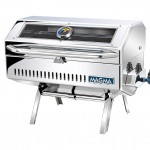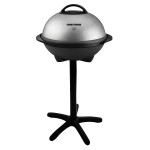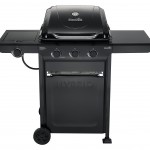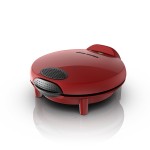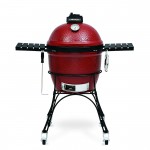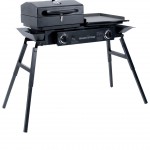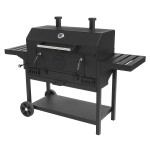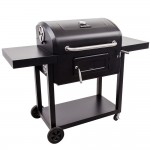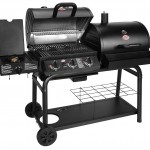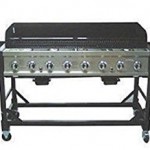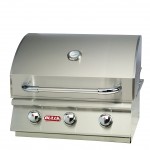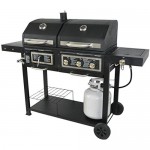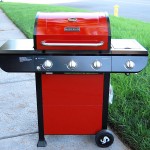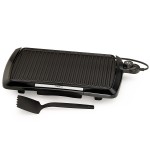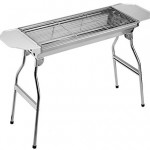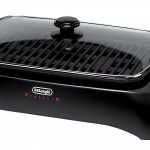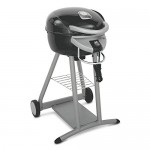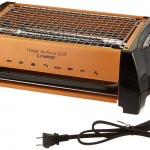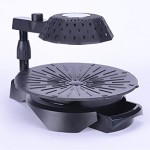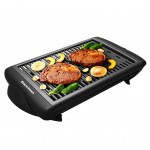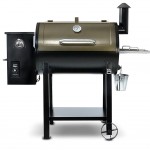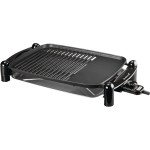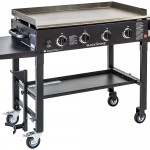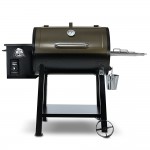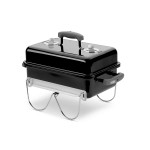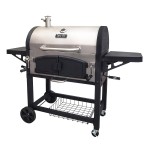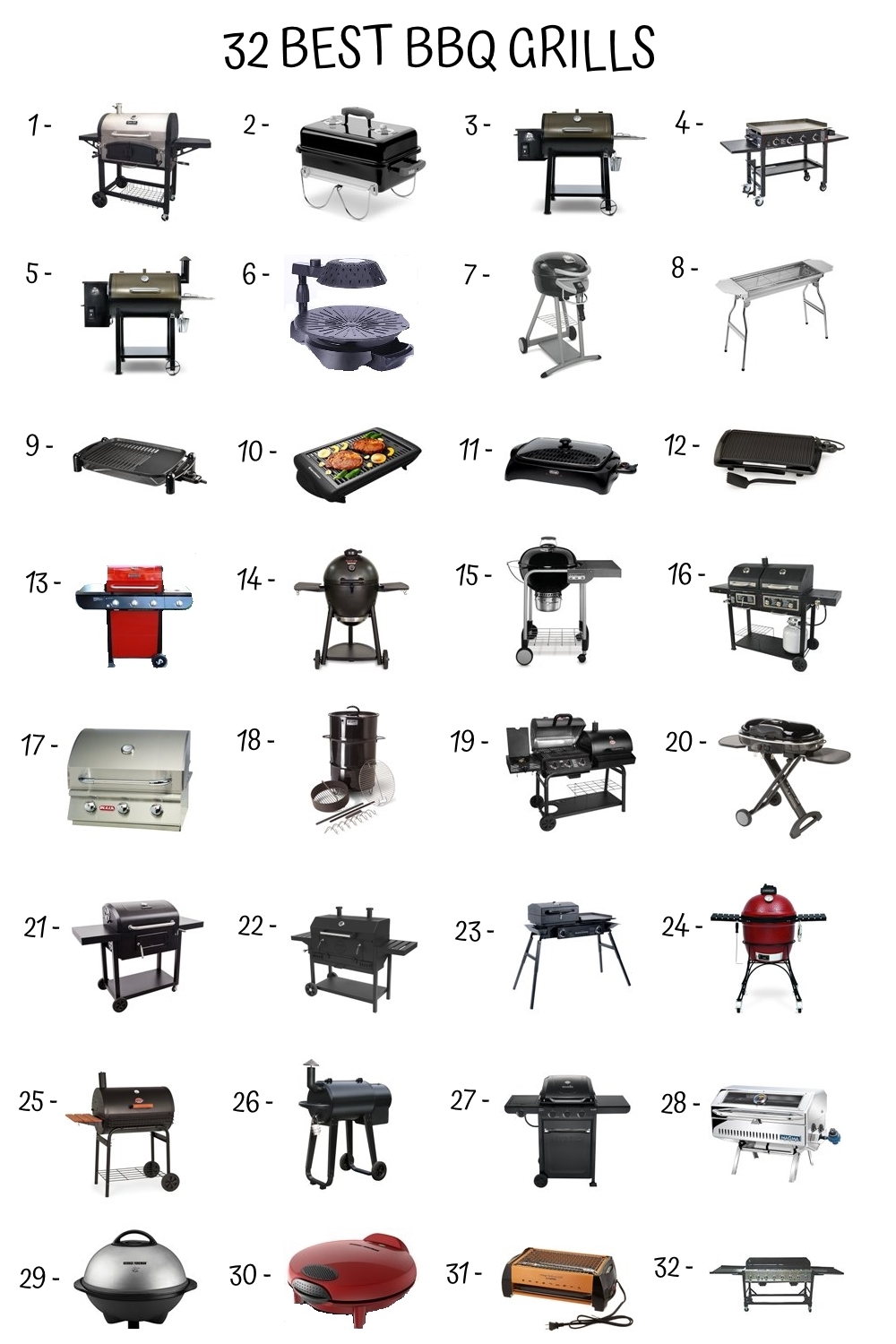
The top-rated BBQ grills (below) are a great choice for most outdoor cooks.
1) Dyna-Glo DGN576SNC-D Charcoal Grill | 2) Weber 121020 Go-Anywhere Charcoal Grill | 3) Pit Boss Grills 440 Pellet Grill | 4) Blackstone 36 inch Gas Grill Griddle Station | 5) Pit Boss Grills 72820 Pellet Grill | 6) 3D smokeless electric grill infrared heat grill | 7) Char-Broil TRU-Infrared Electric Grill | 8) iHOMEARD BBQ Grill Foldable Charcoal | 9) Brentwood TS-640 Electric BBQ Grill | 10) Excelvan Indoor Electric Barbecue Grill | 11) Delonghi BG24 Perfecto Indoor Grill | 12) Presto 09020 Electric Indoor Grill | 13) SUPER SPACE 3 Burner BBQ Gas Grills | 14) Char-Griller 16620 Charcoal Barbecue Grill | 15) Weber 15301001 Charcoal Grill | 16) Portable Combination Charcoal/Gas Outdoor Grill | 17) Bull Outdoor Products 69008 Grill | 18) Pit Barrel Cooker Package | 19) Char-Griller 5050 Duo Grill | 20) Coleman RoadTrip LXX Grill | 21) Char-Broil Charcoal Grill, 780 Square | 22) Pro Series Charcoal Wagon BBQ Grill | 23) Blackstone Grills Tailgater – Portable Gas Grill | 24) Kamado Joe KJ23RH Classic Joe Grill | 25) Char-Griller 2828 Charcoal Grill | 26) Z GRILLS Wood Pellet BBQ Grill and Smoker | 27) Char-Broil Charcoal Gas Hybrid Grill | 28) Magma Products, A10-918-2GS Gas Grill | 29) George Foreman Indoor/Outdoor Electric Grill | 30) George Foreman Electric Quesadilla Maker | 31) Livart LV-982 Electric Barbecue Grill | 32) Commercial LP Gas 8-Burner BBQ Grill |
Nothing says outdoor get-together like grilled meats and vegetables. But if your grilling experience is filled with more flare-ups, rust and frustration than fun, you should invest in a new grill.
Instead of purchasing strictly on price or recommendations, select a grill that matches your style. Are you into convenience and speed? Or do you grill leisurely and try to maximize the smoky flavor? Selecting a grill goes beyond choosing gas or charcoal. Our grill buying guide will point out key features that can help influence your purchasing decision and fit your needs.
What is the Difference Between Gas Grilling & Charcoal Grilling?
When it comes to the epic battle of gas grilling versus charcoal grilling, the bottom line is: grilling is grilling – no matter what fuel source you use. Both involve the radiant transfer of heat from the fuel source to the cooking grid. Drippings come off of the food, land on the heat source and sizzle and smoke. The smoke rising into your food creates barbecue flavor.
So really, it all comes down to personal preference. Our goal is to highlight some of the features that make cooking with each fuel source unique. If, after reading, you aren’t convinced that one or the other is right for you then you may want to purchase both and enjoy every type of grilling possible!
Gas Grill Cooking:
Gas grills require that a liquid propane tank or natural gas line be connected to provide fuel for the burners. Gas burners feature variable temperature controls which allow for high temperatures (ideal for searing) and low temperatures (ideal for indirect cooking). The burners are covered with a shield to protect them from drippings, minimize flare ups and maintain set temperatures.
One great advantage of a gas grill is ease of use. Electronic ignition provides a quick and safe way to get the grill going. With the push of a button or a quick strike of the match, the gas grill quickly and safely lights.
For easy cleanup, simply run the grill on high heat for an hour or two with the lid closed. The grill will burn internal byproducts to ash. Then a brass brush can be used to easily scrape away remaining waste.
When it comes to specialty applications, gas grills are the way to go. Many gas grills have infrared burners ideal for rotisserie cooking. Others feature sear plates which can reach high temperatures very quickly. Side burners are also an option on most gas grills. A side burner comes in handy when preparing extra dishes and it can also be used to keep food warm until ready to serve.
Charcoal Grill Cooking:
Charcoal grills require manual ignition – generally achieved through the aid of lighter fluid and old newspapers. Much like a gas grill, food cooks on a grate over the charcoal. The drippings sizzle and smoke, creating barbecue flavor.
Heat is controlled by the amount of charcoal, its placement in the grill, and a wheel or other mechanism that regulates interior airflow. Greater airflow introduces more oxygen into the grill chamber, allowing the charcoal to burn at higher temperatures.
The primary advantage of charcoal cooking is unique flavor. The smoke generated by the food drippings ignite over the coals to create a deep and distinctive taste that cannot be replicated by a gas grill. This taste is particularly noticeable in meats.
A charcoal grill is much less mechanical than its gas counterpart. There are no burners to clog, burner shields to rust, or igniters to fail. So long as the lid, hinge, and basin are intact there’s not much that can go wrong. Those with apprehensions about the safety of propane tanks or gas connections may prefer the simplicity of a charcoal grill.
What Types of Cooking Grates are Available & How Do They Differ?
There are three types of cooking grates: coated aluminum, cast iron, and stainless steel. Like cookware, each type offers unique grilling advantages, though user preference should ultimately determine which is best.
Coated aluminum grates are cost-effective and the most commonly type. Aluminum is thermally responsive, making it a great conductor of heat. On the down side, aluminum is less durable than cast iron or stainless steel and is more likely to warp, become brittle, or lose its enamel finish over time.
Cast iron grates have become increasingly popular in recent years. Though cast iron is less conductive than aluminum, it retains heat better than any other grate type – providing consistent temperatures on the grilling surface. On the down side, cast iron can crack due to thermal shock and material can suffer external damages over time.
Moderate-to-high priced grills often feature stainless steel cooking grates. Stainless steel is the most durable of all grate types. Its shiny finish makes it easy for grillers to see browning food and it is also the easiest material to clean due to its resistance to corrosion.
Though an excellent cooking material altogether, stainless steel does not have as high a conductivity of aluminum, nor does it retain temperature as well as cast iron. Over time, the finish may discolor or pit.
